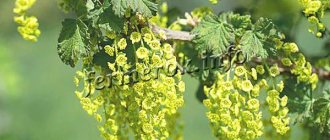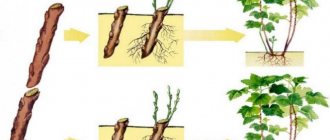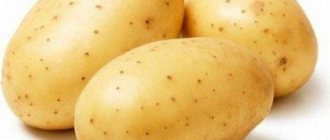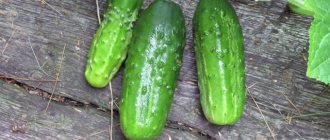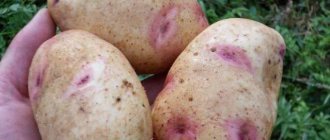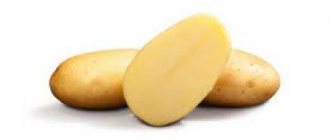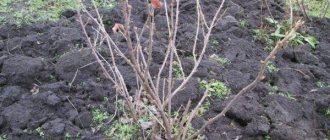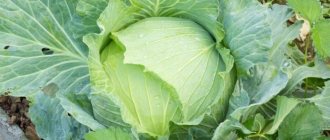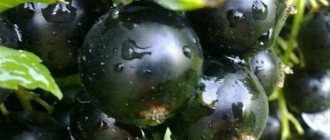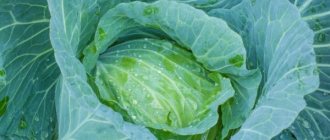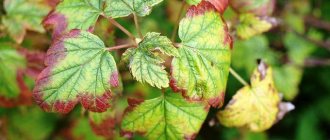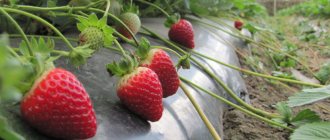Red currant Marmaladnitsa is a late variety of berries that was bred at the All-Russian Research Institute for Breeding Fruit Crops, located in the city of Orel. The authorship belongs to the breeder L.V. Bayanova. Marmalade was obtained by crossing two varieties of berries - Rote Spatlese and Maarsis Promenent. The peculiarity of the juice of these fruits is that it hardens quickly without creating special conditions. You can grow red currants of this variety in any garden plot. The main thing is to follow the rules of planting and care. Only in this case will the bush produce a good harvest.
Description of the red currant variety Marmeladnitsa
Marmaladnitsa is a late-ripening red currant variety. Characteristics of berries:
- fruit ripening, regardless of weather conditions;
- rapid fruit ripening;
- resistance to severe frosts;
- ripening of berries even without receiving enough liquid;
- the plant regularly produces a high yield of up to 2 kg.
Description of the bush
As for the description of the red currant bush of this variety, it grows up to 1.5 meters. The plant is dense, semi-spreading. Stems and shoots are thick. The buds of the plant are large with a pointed tip.
A description of the Early Sweet Currant variety can be found here.
Leaves
The shrub has medium-sized five-lobed leaves. The shade is dark green. The surface of the leaf is shiny. The leaf is wavy at the edges and “looks” upward. The blades are sharp, with the middle one dominating the lateral ones. The blade located at the base is poorly developed. The leaf blade is wrinkled. It can be folded along the main veins or even. The base can be straight or with a small but wide notch.
Colors
The flowers of the plant are saucer-shaped. The color of the receptacle is green; in old plants it may change color to a red tint. The average length of the brush reaches up to 10 cm. The petiole is thick and of medium length. The pedicels are slightly curved, the flower petals are wide and large.
Fruits
The fruit color is orange-red. The shape is flat-round, there are veins. The taste is sour.
Ripening time
Ripening occurs around mid-July or early August, depending on weather conditions. The berries ripen quickly; just a few days after the start of ripening, it will be possible to harvest.
Characteristics of the Sakharnaya red currant variety are presented here.
Characteristics of the variety
The name Marmaladnitsa was not given by chance: there is no point in looking for marmalade sweetness here, because the berry is characterized by a sour taste. The variety acquired this name due to its gelling properties. This variety is a godsend for jelly lovers, as the high pectin content allows you to make thick jam from currants.
Description of Marmaladnitsa currant:
- Bush. It is characterized by medium height, but abundant spreading and density. When swelling, the buds enlarge and become slightly pointed along the edge. The shoots are thickened and slightly pinkish in color.
- Leaves. They are similar to other varieties of red berries. Five lobes, dark green color and shiny structure are the main characteristics of the leaf. The leaves are wavy at the edges, slightly raised towards the top, the petiole is of medium thickness.
- Berries. Arranged in clusters, colored red with white, pronounced veins. When a berry is torn from a bush, there is no wet mark left. The ascorbic acid content in the berries is 88%, so they have a sour taste.
- Flowers. They are painted light green with large and wide petals.
Ficus Melanie - care at home
The variety is resistant to frost, the clusters hang until the first snow. High productivity is the factor for which Marmalade is loved. The perennial plant produces an average of 6-8 kg of berries per bush in one season.
Advantages and disadvantages
The marmalade maker has the following advantages:
- large berry size;
- the ovaries practically do not crumble, which allows you to harvest a good harvest;
- the plant is resistant to sudden temperature changes and can withstand severe frosts;
- is resistant to parasites;
- the berries tolerate heat well even if the bushes are not irrigated for some time;
- tolerates transportation well without changes in appearance;
- contains a large amount of useful substances;
- fruits have good immunity to various diseases;
- The juice of the berries quickly solidifies without freezing.
Disadvantages of the plant:
- due to improper care, the size of the berries changes, the fruits become small;
- bush trunks require special, careful care;
- a large number of shoots are formed on the bush;
- currants require regular fertilization;
- the sour taste of the fruit, which not everyone likes.
Berry composition
The berries of this variety contain the following components:
- ascorbic acid;
- pectin substances;
- vitamins of group B, A, E, PP;
- minerals, which include calcium, magnesium, phosphorus, sodium, potassium.
Such components are present in red currants in large quantities. The chemical composition of the fruit looks like this:
- amount of sugar – 7%;
- acids – 2.2%.
Nutritional value of fruits:
- carbohydrates – 7.5 g;
- proteins – 0.6 g;
- fats – 0.1 gr.
Fruits are among the low-calorie foods. Calorie content is 33.3 kcal per 100 g of berries.
Application
The fruits are suitable for making jam, compote, syrup, juice. However, they are most often used to make jelly. To do this, juice is squeezed out of the fruit, which can be mixed with sugar. This drink freezes on its own. No additional processing required.
The leaves can be used to make tea. This drink increases the body's defenses and stops the inflammatory process. It is especially useful to use it for colds.
The fruits are also widely used in folk cosmetology:
- The berries are recommended for use as masks for the face and body. This product improves the condition of the epidermis, relieving the skin of inflammation and other problems.
- The fruits can be used for hair. They restore the damaged structure of curls, making the strands soft, smooth, and shiny.
- Red currant juice is recommended for use on nails. It strengthens the nail plate, softens the cuticle, which makes manicure easier.
Read about the use of the Shchedraya currant variety at the link.
Medicinal properties
Red currant berries of this variety have the following medicinal properties:
- thin the blood, which prevents excessive clotting;
- free the body from toxic compounds;
- prevent the occurrence of heart attack and stroke;
- have a positive effect on the condition of the heart;
- prevent the development of atherosclerosis;
- increase the body’s defenses, which helps it resist viral and other similar pathologies;
- improve the condition of the visual organs;
- normalize hormonal levels;
- improve the functioning of the digestive system;
- stop the inflammatory process occurring in the body.
Planting and care
For planting, it is better to choose unshaded places protected from the wind.
The depth and width of the hole for planting the bush should be twice as large as the root ball.
Loosen the soil in the hole, add compost and mix it with loose soil. The roots should be straightened .
Deepen the root collar a little. Compact the earth around the bush.
Lay mulch , which is added every spring. This is necessary to retain moisture, inhibit the growth of weeds, and reduce soil temperatures in hot weather.
Soil requirements:
- well drained;
- wet;
- with low groundwater;
- with a high content of clay and sand;
- non-acidic.
to prune regularly in early spring, leaving from 9 to 10 shoots, including several annual, biennial and triennial shoots. All shoots that are older than four years must be ruthlessly removed.
Propagation is very simple, by cuttings. It is enough to sprinkle the branch bent to the ground with soil in the spring, and in the fall dig it up and plant it in the chosen place. With this method, the root system of the currant bush develops very well.
Features of cultivation
In order for currants to produce a good harvest and not cause problems, it is recommended to follow the rules for planting seedlings and caring for the plant. Only this guarantees an abundance of fruits on the bushes.
Landing
When planting a plant, you should observe the timing and distance between the bushes. It is also recommended to choose the right seedlings, location and prepare the soil.
Deadlines
If you plant a plant in the autumn, the bush will have time to take root and grow by next year. The exact choice of month for planting seedlings depends on the region:
- in the southern regions it is recommended to plant the plant in September;
- in the middle zone, October should be chosen for the procedure.
Selection of seedlings
When choosing, you need to pay attention to the following points:
- Presence of roots. The root system must be well developed. You should not take seedlings with damaged or poor-quality roots.
- The branches of the seedling should be straight and straight. The trunk is clean, without defects or pests. The integrity of the bark should not be compromised. The presence of traces of insects, stains, and displaced fragments is not allowed.
- The minimum shoot length excluding roots is 40 cm.
We recommend that you familiarize yourself with the characteristics of the Yadrenaya blackcurrant variety in this material.
Preparing the landing site
In order for the bush to take root and develop properly, the soil is saturated with useful elements. To do this, the following fertilizer substances are added to the soil:
- compost – 20 kg;
- nitroammophoska – 150 g;
- ash – 200 gr.
This amount of components must be added to 1 m2 of soil. Saturation of the soil with useful substances is carried out a month before planting.
If the procedure was not completed in a timely manner, you can saturate the soil with useful elements immediately before planting the bush. To do this, dig a recess for planting, from which the soil is removed. After this, the soil is mixed with the following components:
- compost - 1 bucket;
- superphosphate – 1 glass;
- potassium chloride – 50 g.
The seedlings are covered with this mixture after planting.
The soil
Red currant variety Marmeladnitsa takes root well in soil mixed with sand and clay. The soil must be saturated with a large amount of oxygen. Permissible acidity is reduced or neutral.
Distance between bushes
If you plan to plant several bushes, then the distance between them should be at least 2 meters. If you plant plants too close to each other, this will interfere with the growth of the bush and limit the access of sunlight to the fruits. As a result, the berries will be small in size or the bushes will not produce a good harvest.
When planting entire rows, you should also maintain the distance between plants. In this case it is 1.5 meters. Next door you can plant the White Fairy variety.
When planting a plant, it is also recommended to take into account a couple more points. Bushes should grow at a distance of at least a meter from the fence or paths.
Care
After planting, it is important to provide the plant with proper care.
Watering
Typically, a plant of this variety does not need additional irrigation. The bushes receive a sufficient amount of moisture when it rains. Additional watering should be done if there is a drought.
Pruning and shaping the bush
Red currants need proper bush formation. For this reason, trim the stems regularly. The procedure is recommended to be carried out before the buds open.
You will find a description of the Pygmy blackcurrant variety in this article.
You can do the formation of a bush in the autumn. However, in this case there is a possibility that the bush will not survive the winter well. The risk of plant bending increases.
It is recommended to form a bush as follows:
- in the first year of the bush’s life, only 5-7 shoots are left on the plant, the rest are removed;
- in the second year, 4 last year and 5 new shoots are left on the plant;
- in the third year, 4 shoots from the first year, 4 shoots from the second year and 4 new shoots should remain on the bush.
In addition, dry, damaged or broken branches are pruned. In summer, green shoots are pinched. The manipulation is carried out to form replacement shoots.
Top dressing
Only regular application of fertilizers guarantees normal growth and development of bushes, as well as a rich fruit harvest.
The plant should be fertilized according to the following algorithm:
- First half of March. At this time, urea must be added to the soil. The recommended amount of product is 25 g. The raw materials are diluted with water in the ratios indicated on the packaging. The resulting fertilizer is suitable for root feeding. The entire product is poured into the soil at one time.
- Flowering period. At this time, it is best to use droppings for feeding. The raw materials are diluted with water. The proportions will be as follows: 1 part litter to 15 parts water. The resulting composition is used for root feeding.
- During the autumn period. To carry out the procedure, you will need five kg of manure and 7 units of compost. The mixture is designed for 1 m2 of soil. This fertilizer is used once every 2-3 years.
Shelter for the winter
Red currant Marmeladnitsa, like Viksne, is one of the frost-resistant plants. For this reason, bushes usually do not need covering. However, such a procedure will not be superfluous and will help preserve the plant in case of severe frosts.
To perform the shelter correctly, proceed as follows:
- the space near the bush is cleared of debris and the soil is loosened;
- the soil under the plant is covered with sawdust and or covered with spruce branches, the layer thickness should be 10 cm;
- the branches are bent to the ground and material is fixed on top that will hold the plant in this position - for this you can use boards or other objects, but not those made of metal.
In this case, the plant will be covered with a thin layer of snow. You can also create a bush shelter yourself. To do this, the branches are covered with mulch or soil. This material will protect the currants from freezing. Shelter for the winter will also be needed for Dutch pink currants.
Reproduction
The plant is propagated by cuttings. To do this, the branch is bent to the ground in the spring and sprinkled with soil. In the fall, the plant is dug up and replanted. In this case, the root system of the bush will develop well.
Harvest and storage
The fruits are collected after the berries have completely ripened. They begin to ripen already in mid-July, the process may continue in August, depending on weather conditions.
One bush, 3-4 years old, produces a harvest of up to 2 kg of berries. The older the plant, the more fruits can be harvested from it. Thus, red currants aged 5-7 years with proper care guarantee a harvest of up to 5-7 kg per bush.
This type of currant can be stored fresh in the refrigerator. Here the fruits can be kept for 12-15 days. At temperatures from 0 to +10C, the storage duration increases and is approximately a month.
How to properly care for the variety
Comprehensive care for berry crops involves regular watering of the bushes, the use of nutritious fertilizers, crown formation, and protection from frost. The quality of the harvest, the taste characteristics of the berries and the general condition of the plants largely depend on the timeliness and correctness of these procedures.
We organize proper watering
Marmaladnitsa currants, when grown in a temperate climate, have sufficient natural precipitation. Additional soil moisture should be carried out in severe drought conditions. It is also recommended to water the bushes during the period of intensive fruiting. Irrigation is carried out in the evening, after sunset, spending 20-30 liters of water on each bush.
For the convenience of watering plants, you can build a drip irrigation system. To retain moisture in the soil, the tree trunk circle is covered with a layer of mulch.
We carry out formative pruning
It is better to form the crown in the spring, before the buds open. In the first year of seedling development, 5-7 developed shoots are left on them. In the second and subsequent years, 5 annual or more mature shoots are left, and the rest are removed. Branches that are too old, damaged or withered should also be pruned. In summer, young shoots are pinched to stimulate the formation of replacement shoots.
Tourmaline products. Health benefits and harm, properties, contraindications for the use of products
Adding Nutrients
During the growing season, it is necessary to fertilize currants several times. The Marmaladnitsa variety needs the following fertilizers:
- in early spring, plants are watered with urea solution;
- during the period of active flowering, the roots are watered with a mixture of water and bird droppings, and the above-ground part is sprayed with potassium permanganate;
- In the fall, the bushes are fed with rotted manure or compost.
Sheltering bushes for the winter
When grown in northern regions, bushes are protected for the winter using covering material. Thick fabric, burlap or opaque plastic film is placed on top of the plants. It is also possible to provide natural shelter for the plant. To do this, you need to bend the branches towards the ground so that they are under the snow cover. The branches are fixed to the soil surface using weights, for which it is recommended to use logs or boards.
Reviews from gardeners about Marmeladnitsa
Galina, 36 years old: “They choose this variety for making jam. The berries taste good due to their pleasant sourness. There were no problems with care."
Lidiya Vasilievna, 58 years old: “This is not the first season I have been growing the Marmeladnitsa variety. The harvest is consistently large, the fruits are juicy. Last year I noticed aphids on the bushes, so I had to spray the beds with insecticides. The pest invasion did not affect the taste and quantity of the harvest.”
Disease resistance
Marmalade has good immunity to viral diseases and resistance to pests. However, additional processing of the plant will not hurt. This is what poses the greatest danger to red currants:
- Anthracosis. This is a fungal pathology. The disease can be recognized by the brown spots that appear on the leaves. At first they are small in size, but gradually increase in size. Due to this disease, the berries fall off, which negatively affects the amount of harvest. In addition, the pathology leads to the appearance of spots on the fruits themselves. To get rid of the disease, it is recommended to use Cuprozan. Thinning the currants, loosening the soil under the bush, timely clearing the soil of fallen leaves, proper fertilizing and using the furnigicide Topsin-M before the red currants bloom will help to avoid the occurrence of the disease.
- Drying of shoots. This is a fungal disease. Pathology can be recognized by the loss of elasticity of the cortex. As a result, this part of the plant begins to crack. Small protrusions form in the defects, and the branches dry out and over time the shoots die. You can get rid of pathology only by thinning. The occurrence of the disease can only be avoided if the soil is not over-moistened. Drying of shoots can also affect Alpine currants.
- Columnar rust. This is also a fungal pathology. The disease can be recognized by yellow spots on the leaves of the bush. Such defects very quickly change their shade to a red color, which resembles rust. This is where the name of the pathology comes from. To free red currants from pathology, it is recommended to use Nitrofen. The product is used according to the instructions included with the drug.
The following pests can also threaten red currants:
- Aphid. The larvae of this insect reproduce from the bottom of the leaves of the plant and suck out the juice along with useful substances. The following signs help to recognize the presence of a pest: swellings appear on the surface of the leaves. Such defects have a yellow or dark red tint. As a result of the pest's activity, the leaves die and fall off. The drug “Iskra” will help to cope with the problem.
- Ognevka. This is a brown butterfly. This insect is dangerous because it eats berries. Two drugs will help protect the fruits - Apollo and Karbofos. The first remedy is used before the formation of the ovaries, the second - after.
Diseases and pests
- aphid. The most common "hunter". The embryos live on the back side, the juice of the trunk is used as food. Signs of infestation are swollen spots, curling, and yellowing of foliage. Ladybug or pesticides such as “Iskra” are suitable for control;
- fire A brownish butterfly about three centimeters long. Eats the fruit itself. Preparations "Apollo" before the ovary, "Karbofos" - after;
- currant glass. The body is protected by lilac scales. Harm is caused to the grapes - a break is detected. "Karbofos" is applied before buds open;
- Anthracosis is recognized by brown specks that gradually increase in size. If the stalk is damaged, the fruit falls off. For treatment, purchase “Kuprozan”;
- drying out. The protective layer cracks, bumps appear, which leads to the death of the shoot. The only effective method is thinning;
- rust. Formation of streaks similar to corrosion. An indispensable assistant is Nitrafen;
This material will tell you about brown spots on currant leaves.
conclusions
- Red currant Marmeladnitsa is a late variety of berries that grows in almost any weather conditions.
- The plant, like Altai, produces a large harvest of fruits if the bushes are provided with proper care.
- Red currant berries of this variety contain a large amount of pectin, ascorbic acid, vitamins and minerals.
- The fruits are used in cooking, folk medicine and cosmetology.
- Red currant berries have beneficial properties.
- When planting a plant, it is important to properly fertilize the soil.
- When caring for red currants, it is recommended to properly feed, water and shape the bush.
History of selection and region of breeding
The alma-mother of the variety is the All-Russian Research Institute for Breeding Fruit Crops in the city of Orel.
And the author is Bayanova L.V. This is the result of crossing the German variety Rote Spatlese and Maarsis (Marshal) Promenent.
This variety received its name for its property, namely: the ability to quickly solidify juice even without heating, almost immediately after squeezing.
Variety testing has been taking place since 1996.
Seedling care
Trimming
It is carried out after winter. Perennial shoots with a period of four years or more must be completely cut out due to crop failure. Find out about popular varieties of pink currants at this link.
Properly processed currants consist of twenty branches of different ages.
It is recommended to regularly trim to remove dead, unusable parts. Pinching will ensure consistent growth and fruit throughout the season.
Watering
On average, “Marmalade” is content with natural precipitation, but in case of prolonged drought, additional watering will not harm. As soon as August arrives, the berries will begin to sing, which signals the need for liquid.
Moisture accumulates in the recess, and the curb prevents it from draining. To prevent evaporation as much as possible, mulching is done.
Feeding
Currants are extremely demanding when it comes to feeding, so regular procedures of this kind have a beneficial effect on their condition:
In the first ten days of March, 25 g of urea is diluted according to the instructions and poured under fruit crops. (for one time)
During the flowering period, a solution is prepared from water and droppings (15:1, respectively), under the root, or irrigation with microelements.
In the fall, take five kilos of manure/seven units of compost per 1 m2. Organic matter is added every 730–1095 days. This article will tell you why currant branches dry out.
They begin to “feed” the bush from the third year of life.
Reviews from gardeners about the variety
There are many varieties of red currants on the site, but among the later ones we like the Marmaladnitsa variety. The taste is a little sour, but it is very productive and hangs almost until frost.
Pioneer-2
https://forum.vinograd.info/showthread.php?t=5758
I was very pleased with the variety. I like the taste. The harvest is beyond praise.
Angelica
https://forum.vinograd.info/showthread.php?t=5758
Everyone who tried my Marmaladnitsa berries did not find anything tasty in them. They are sour. But for jelly, the variety is simply a miracle.
ABBA
https://forum.vinograd.info/showthread.php?t=5758
I also have Marmaladnitsa, this is only my second year. The berries are delicious. The branches are fragile - they break off with the wind. Maybe this applies to all red currants, I don’t know. I haven't planted a red one before.
Sirina
https://dacha.wcb.ru/lofiversion/index.php?t12148–50.html
We have Marmaladnitsa currants growing in our garden, a very good variety, late, with sweet and sour red-orange berries.
amplex
https://forum.prihoz.ru/viewtopic.php?t=1689
Red currant Marmalade is often found in garden plots. This is an unpretentious productive variety that grows well in various types of soil. The harvest collected from 3-4 bushes is enough to eat fresh berries, as well as for preparing seasonal preparations.
Planting currants
Planting seedlings in a permanent place of growth requires preparatory work and adherence to certain technology. In order for currant bushes to actively develop and bear fruit, it is important to choose a suitable location, take into account planting dates, and prepare the soil and seedlings.
Deciding on a place
Too high a temperature and direct exposure to sunlight adversely affect the growth of bushes. For the Marmeladnitsa variety, it is recommended to choose a semi-shaded place where the plantings will be in comfortable conditions. The correct choice of location prevents leaves from falling, shoots drying out and berries from becoming smaller. In this case, heavy shade should be avoided so that the plants are not exposed to fungal infections.
Optimal timing
The most suitable time for planting currants is the second half of autumn, when the sap flow in the shoots stops. In the middle zone, the Marmeladnitsa variety is planted in late October or early November. In the southern regions, it is possible to postpone the landing date to mid-November.
In northern regions with extreme temperature drops, it is better to plant currants in the spring so that the seedlings have time to adapt to new conditions.
Preparing the plot and beds
For the full development of plantings, currants should be planted in fertile soil. For this purpose, preliminary preparation of the site is carried out. 3-4 weeks before transferring the seedlings to a permanent place, the beds are treated with rotted compost, nitroammophos and wood ash.
After applying the fertilizer, the soil is carefully dug up or loosened. If it is not possible to carry out preliminary preparation, you should add fertilizing directly during planting of seedlings. In this case, the excavated soil from the planting hole is mixed with potassium chloride, superphosphate and compost. The resulting mixture is used to sprinkle seedlings.
Technology for planting seedlings
To avoid common mistakes, you should follow the step-by-step instructions. The planting process requires the following steps:
- Dig a planting hole with standard dimensions of 50 x 50 cm. It is recommended to prepare the hole several weeks before planting.
- Mix the fertile soil layer with organic fertilizers.
- Place the currant seedling in the central part of the hole and straighten the roots so that their bases do not bend upward. The root collar should remain 6 cm below ground level.
- The seedling is covered with earth, the top layer is lightly compacted and watered abundantly.
- The area around the seedlings is covered with a layer of mulch. Straw, humus, peat, sawdust, and pine branches can be used as processing materials.
- The top of the plant is trimmed, leaving no more than 4 buds on the seedlings.
